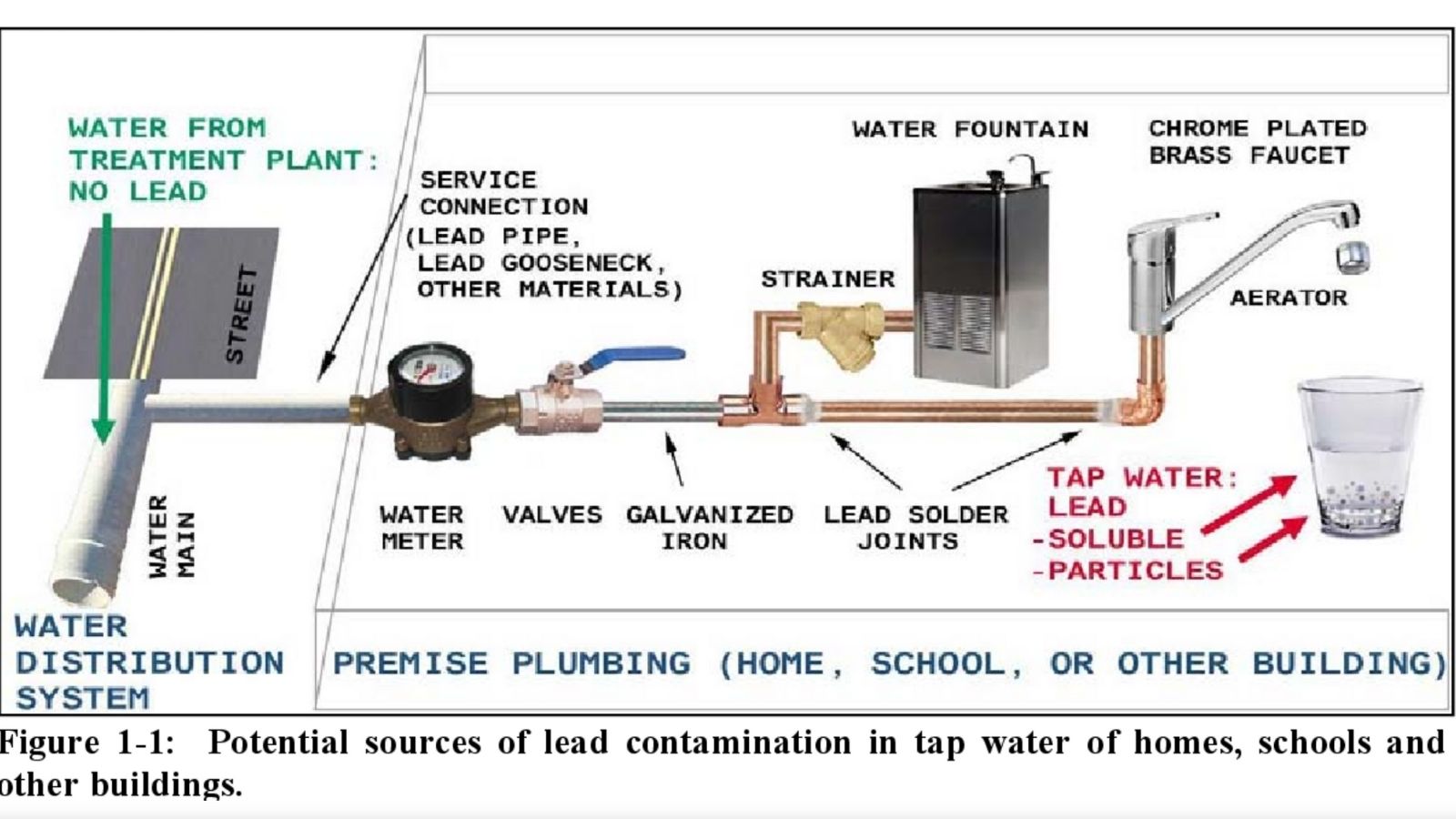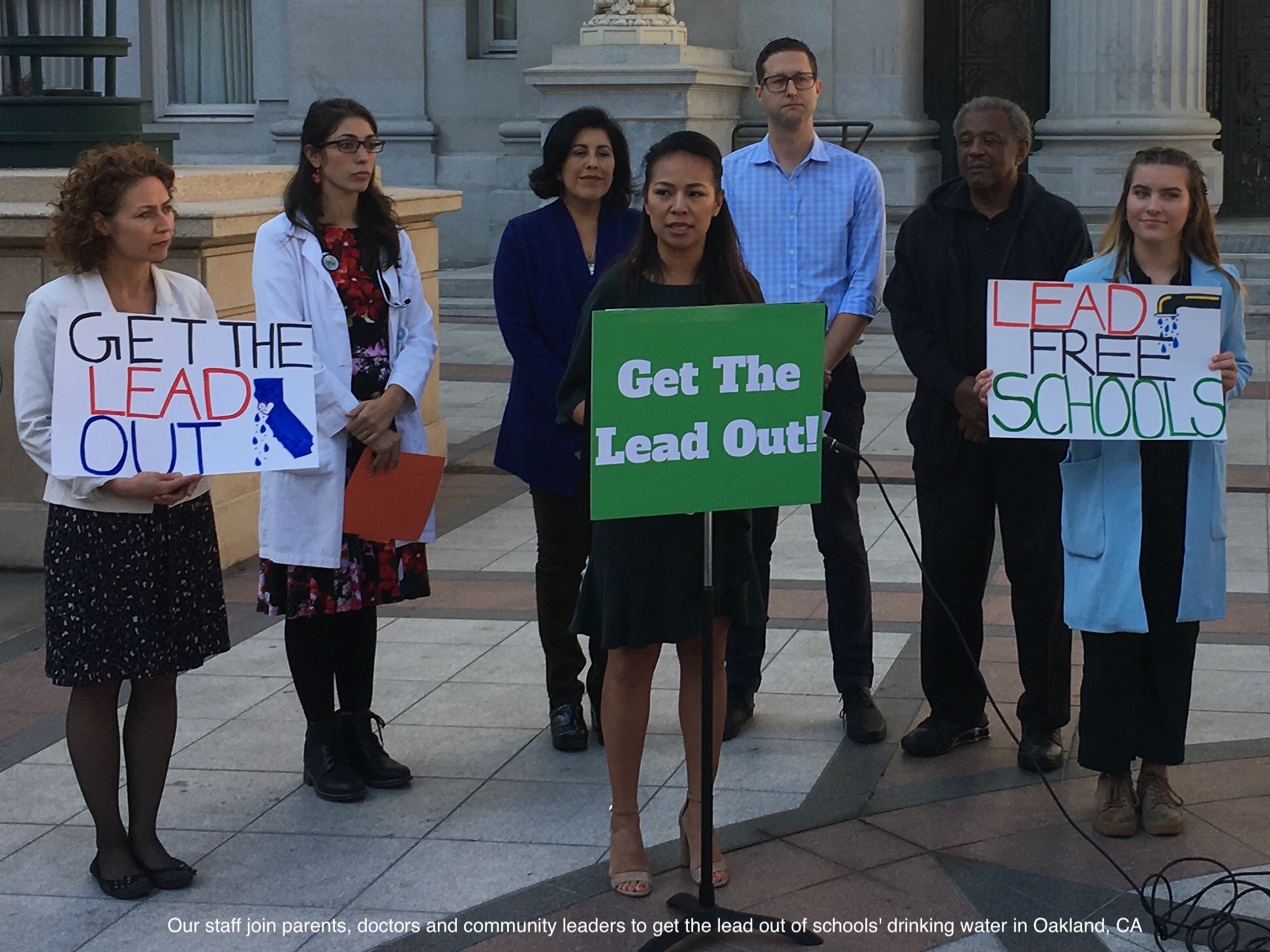Sign up for our alerts so you can stay up to date with the latest campaign developments. And please consider supporting the research, advocacy and organizing that it takes to continue pushing for change.
A toolkit to help parents, teachers and school officials get the facts on lead in drinking water and take action to ensure safe drinking water at school
A toolkit developed by Environment America Research & Policy Center and U.S. PIRG Education Fund
Written by John Rumpler, Environment America Clean Water Program Director; and Emily Rogers, U.S. PIRG Zero Out Toxics Advocate
Our children need safe drinking water — especially at school, where they go to learn and play each day. Unfortunately, lead is contaminating drinking water at our schools and preschools.
With major funding now available to our schools, we have an unprecedented opportunity to “get the lead out” and ensure safe drinking water for our kids.

Step 1: Get the facts on lead in schools’ water
We now know the toxic threat of lead in drinking water extends to thousands of communities across the country. In fact, lead is even contaminating drinking water in schools and preschools — flowing from fountains and faucets where our kids drink water every day.
Lead is contaminating drinking water at schools across the country.
As more schools test their water for lead, they are finding widespread contamination. This health threat is present in all kinds of schools — including those in rural towns, major cities and affluent suburbs.
See our map showing lead detected in schools’ drinking water.
Our analysis found that 53 percent of California school districts reporting results to the state detected lead in their water, as of March 2020. Unfortunately, the state data does not include results below 5 parts per billion, even though lead is harmful to children’s health even at low levels. We created a map where you can see the highest lead concentrations detected at specific schools.
In all likelihood, the confirmed cases of lead in schools’ water are just the tip of the iceberg. That’s because until 2010, California standards allowed fountains, faucets, pipes and plumbing to contain a significant amount of lead. (Even some post-2010 faucets can cause contamination.) And wherever lead comes in contact with water, there is a risk of contamination.
In all likelihood, these confirmed cases of lead in schools’ water are just the tip of the iceberg. That’s because until 2014, national standards allowed fountains, faucets, pipes and plumbing to contain a significant amount of lead. (Even some post-2014 faucets can cause contamination.) And wherever lead comes in contact with water, there is a risk of contamination.
For child care centers and small school buildings, the pipe bringing water in from the street might also be made of lead. These lead service lines are a major source of contamination.

(Triantafyllidou 2011)
Lead is highly toxic, especially for children.
Lead threatens our kids’ health, especially how they learn, grow, and behave.
There is no safe level of lead.
Lead is so toxic at low levels that the EPA has set a goal of having no lead in drinking water. The American Academy of Pediatrics says lead in schools’ drinking water should not exceed 1 part per billion.

Step 2: Learn about the best solutions
To ensure safe drinking water, schools should:
It is crucial to take these steps at all taps used for drinking or cooking, not just those in which tests have confirmed the presence of lead. Because lead testing is highly variable, the water from a fountain or faucet can be “highly hazardous” even if several samples fail to detect lead. As long as there is lead in the plumbing or pipes, any tap without a filter can serve lead-laced water to our kids.

Step 3: Do the math
Here’s the great news: we can prevent lead contamination with just a small fraction of the nearly $110 billion in federal stimulus funds that school districts are now receiving. These Elementary and Secondary School Emergency Relief (ESSER) funds can be used to reduce “exposure to environmental health hazards,” such as lead contamination of drinking water. You can see how much of this funding your school district is expected to receive here. (See the “ESSER III” tab.)
Hydration stations with filters cost roughly $3,000 (including installation), based on the experience of school districts in Michigan and Massachusetts. Point of use filters for faucets typically cost less than $100 each.
Other federal funding sources include:
State and local resources can also be used to safeguard drinking water at school.
With this unprecedented array of funding available, school districts have an incredible opportunity to ensure safe drinking water for our kids.

Step 4: Work together to get the lead out
School officials will be more likely to take action if you get many people involved.

Here are some ways to get started:

As @[yourtown] goes #backtoschool, we know kids run better unleaded. Help #GetTheLeadOut of water at our schools.

Contaminated water @[yourtown] schools? Time for @[LOCAL DECISIONMAKER] to #GettheLeadOut. [INSERT LINK TO YOUR LOCAL PETITION]

There’s no safe level of lead. As our children head #backtoschool, get the facts on safe drinking water from @EnvAm @uspirg [LINK TO TOOLKIT]

As our kids head #backtoschool, here’s a quick homework assignment for parents: watch this video about lead in schools’ drinking water. https://bit.ly/2n4R4LM
To the Editor:
Thank you for your recent piece on the “back to school” season (INSERT TITLE AND DATE OF RELEVANT NEWS STORY). Here’s one challenge that parents and children should never have to worry about when headed back to school: lead in drinking water.
Lead is a potent neurotoxin that impairs how children learn, grow, and behave. In the wake of the tragedy in Flint, Michigan, more schools across the country are testing their water. And all too often, they are finding lead flowing from faucets and fountains where children drink.
Like most communities, [COMMUNITY’s] schools have plumbing and fixtures made with lead. So even without any testing, there is every reason to believe that lead is contaminating water at our schools as well.
So here is a “back to school” homework assignment for [COMMUNITY]: let’s work together to get the lead out. We can start by immediately installing filters certified to remove lead on faucets and fountains in our schools. We’ll also need to replace the lead pipes, solder, and fixtures that cause the contamination in the first place. Meanwhile, let’s shut off taps where lead in water exceeds one part per billion, as recommended by the American Academy of Pediatrics. Our children deserve safe drinking water at school. Let’s get to work.
Sincerely,
[NAME]
[OTHER REQUIRED INFO]

Step 5: Don’t stop until your kids’ school gets the lead out
Contact us at [email protected] for further support of your efforts to secure safe drinking water at school.
Sign up for our alerts so you can stay up to date with the latest campaign developments. And please consider supporting the research, advocacy and organizing that it takes to continue pushing for change.
Sign Up

Find out more


Finding filters certified to remove lead